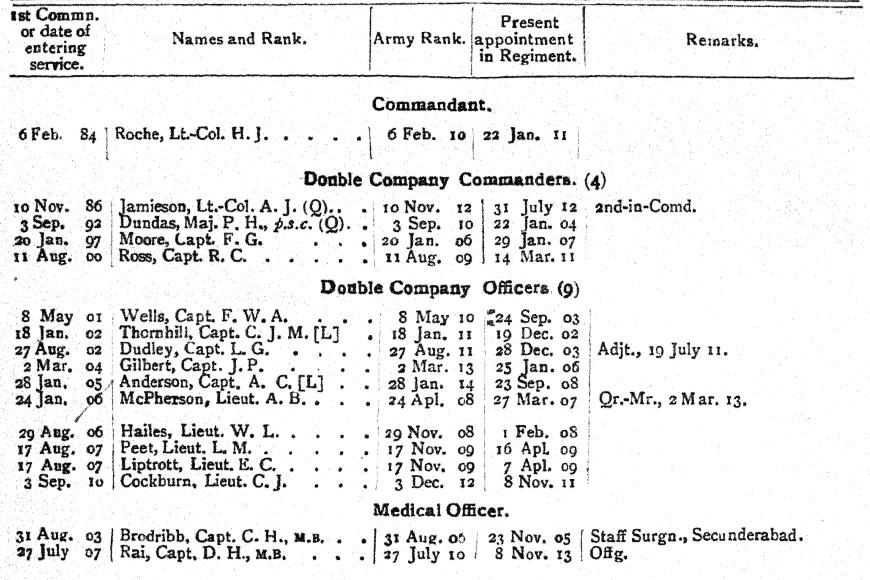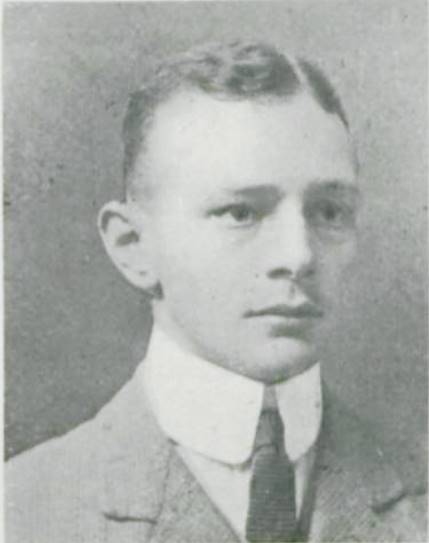This article is about the 6th Jat Light Infantry and will help you to research the Regiment and the soldiers who served with it during the First World War. I have written a separate article for the 2nd Battalion 6th Jat Light Infantry and a series of guides to help you to research soldiers who served in the Indian Army during the war. To view the guides click on the blue links below:
The 6th Jat Light Infantry in the First World War
Lineage: Raised at Fatehgarh in 1803 by Major J. Malcolm and Lieutenant W. Ball as the 1st Battalion, 22nd Regiment of Bengal Native Infantry. In 1824 it became 43rd Regiment of Bengal Native Infantry and the 43rd Regiment of Bengal Native (Light) Infantry in 1842. Then in 1861 the 6th Regiment of Bengal Native (Light) Infantry and the 6th Regiment of Bengal (Light) Infantry in 1885. In 1897, the 6th (Jat) Regiment of Bengal (Light) Infantry and in 1901 6th Jat Light Infantry. Then in 1903 became the 6th Jat Light Infantry and in 1922 the 1st Battalion, 9th Jat Regiment.
Class Composition of Battalion in 1914: 8 Companies of Jats. 1919: 4 Companies of Jats.
Location in August 1914: The 6th Jat Light Infantry was stationed at Secunderabad (Telangana, India), having arrived from Jhansi (Uttar Pradesh, India) on 26th October 1910.
The 6th Jat Light Infantry was stationed at Secunderabad when the First World War began in August 1914 and initially served with the 19th Dehra Dun Brigade, 7th (Meerut) Division. The 7th (Meerut) Division was part of Indian Expeditionary Force A which was sent to France and served on the Western Front. The Regiment received orders to mobilize on 9 August 1914, left Bombay (Mumbai) on 20 September and arrived at Marseilles, France on 12 October 1914. Below is an extract from the October 1914 Indian Army List recording the British officers serving with 6th Jat Light Infantry in the October 1914. The majority of these officers would become casualties during the war.
Captain Alexander Clairmonte Anderson 6th Jat Light Infantry was killed when a hand grenade he was about to throw blew up prematurely on 23 November 1914. Anderson had served with the 6th Jat Light Infantry since 1908. This photograph and the circumstances of his death were recorded in Bond of Sacrifice.
War Diaries for the 6th Jat Light Infantry
There are seven war diaries for the 6th Jat Light Infantry and the first five have been digitized by the National Archives. To download these war diaries for a small fee click on the blue links below which will take you to the National Archives’ website. The last two war diaries can only be viewed at the National Archives. I have copies of all the war diaries and have transcribed some entries below.
- Date: 28 June 1914 – 31 December 1915
- 19th Dehra Dun Brigade, 7th (Meerut) Division
- Reference: WO 95/3942/2
- Notes: A very good war diary which starts by noting the events which led to the declaration of war and contains detailed information about the activities 6th Jat Light Infantry in France.
- Date: 01 January – 30 April 1916
- 21st Indian Infantry Brigade, 7th (Meerut) Division
- Reference: WO 95/5139/2
- Notes: A good war diary which contains detailed accounts of the Regiment’s activities in the Kut-al-Amara relief attempts in January 1916. After February 1916 entries become shorter. There is a list of British and Indian officers wounded at the Battle of Sheikh Sa’ad, and at the Battle of Hanna, which includes a handful of Indian other ranks.
- Date: 01 May 1916 – 31 July 1917
- 41st Indian Infantry Brigade, Euphrates Defence and Communications, Mesopotamia
- Reference: WO 95/5030/4
- Notes: An average war diary with many months written on a single page.
- Date: 01 August – 30 September 1917
- 50th Indian Infantry Brigade, 17th Indian Division, Mesopotamia
- Reference: WO 95/5209/12
- Notes: A short war diary consisting of three pages. There is only a single entry for August, covering the entire month and a handful of entries for September.
- Date: 01 October 1917 – 30 April 1919
- 50th Indian Infantry Brigade, 15th Indian Division
- Reference: WO 95/5198/5
- Notes: An average war diary at best where most days have no entry, though most months have a list of British officers serving with Regiment from January 1918. There is also a Narrative of the Attack on Khan Baghdadi.
- Date: 01 May 1919 – 31 August 1919
- 44th Infantry Brigade, 16th Indian Division
- Reference: WO 95/5414
- Notes: A good detailed war diary which contains nominal rolls of British officers present each month.
- Date: 29 October 1921- 28 February 1922
- Waziristan Force
- Reference: WO 95/5398
- A very good war diary with detailed descriptions of ambushes and skirmishes. There are lists of British officers of the 6th Jat Light Infantry on 29 October 1921, 26 December 1921, 31 December 1921 and January 1922. There are frequent mentions of British and Indian officers and other ranks with service numbers.
Further Sources for the 6th Jat Light Infantry
A very good source of information for the Regiment and the British officers who served with it are its confidential reports held at the British Library: Confidential Reports on Regiments etc. These reports also contain the annual confidential reports of the British officers who served with the Regiment. However, when the Regiment was abroad only its Depot and the British officers serving there were reported on. For information regarding the British and Indian officers who served with the 6th Jat Light Infantry, the Indian Army List should be consulted.
Extracts from the War Diaries of the 6th Jat Light Infantry
28 June 1914 – 31 December 1915, France, WO 95/3942/2
28 June 1914 Secunderabad- The Archduke Franz Ferdinand, heir-apparent of Austria-Hungary and his consort were assassinated at Sarajevo.
15 September 1914 – Embarked on Hired Transport Arankola with 1st Line Transport. Left Battalion of 1/9th Gurkhas with their 1st Line Transport also on board H.T. Arankola. Space for Indian Rank and File very limited and only two cooking galleys provided for all the Indian ranks (about 1325 men including followers and Transport personnel).
12 October 1914 – Orders having been received to hand in old rifles and bayonets and small arms ammunition and received new ones in exchange, the Regiment handed in the equipment and received the Lee Enfield Short Rifles Mark III and bayonet in exchange and Mark VII ammunition, machine guns also exchanged. Small arms ammunition at 300 rounds handed in but only 200 rounds per man received in exchange.

